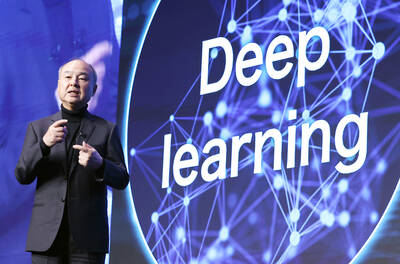Sony Corp’s incoming chief executive officer Kazuo Hirai has said he will make “a hard, painful decision” to cut costs in the TV business and supply chain, as the company faces its fourth straight annual loss.
“Pain can come in many ways,” Hirai, 51, told reporters in Tokyo on Thursday. “We have to make some hard decisions on where there are redundancies and reduce fixed costs in a variety of different areas.”
Hirai, who replaces Howard Stringer as Sony president and chief executive on April 1, said he was committed to TVs because they are “at the center of every entertainment experience.”
Sony, a trendsetter in the 1980s, predicts that it will lose money on TVs for an eighth consecutive year as consumers flock to devices from Samsung Electronics Co and Apple Inc for movies, music and games.
Sony, the world’s No. 3 TV maker, will invest in new technologies and improve its lineup of LCD sets, said Hirai, who is credited with reviving the PlayStation game business.
“Sony will have to cut jobs if it loses any more market share in TV,” Shiro Mikoshiba, an analyst at Nomura Holdings Inc in Tokyo, said before the interview.
Stringer streamlined the firm’s workforce, with personnel falling from 180,500 in 2008 to 168,200 last year, a contraction of 6.8 percent, the company’s Web site said.
Sony, once worth US$100 billion is now worth US$20 billion, according to data compiled by Bloomberg.
Shares fell 0.5 percent to ¥1,536 in Tokyo yesterday, trimming gains this year to 11 percent. Sony’s stock tumbled 53 percent last year.
The maker of Bravia televisions more than doubled its annual loss forecast last week to ¥220 billion (US$2.9 billion), blaming a stronger yen, production setbacks caused by floods and the cost of exiting a display-panel venture with Samsung.
Sony could drop its less-competitive businesses, Hirai said last week without elaborating.
The company is set to lose as much as ¥230 billion on TVs this fiscal year after lowering its sales target to 20 million sets from 27 million last year. It is writing down the value of some facilities, reducing the number of models and cutting marketing expenses in an effort to make the unit profitable by March 2014.
“It is very difficult to imagine Sony getting out of the TV business,” Hirai said on Thursday. “We have to obviously focus on pushing the envelope in coming up with new technologies.”
The company has cut sales forecasts on cameras, game consoles and personal computers, and said mobile phone sales were worse than expected.
Japan’s largest-consumer electronics exporter is looking to save money at its local operations and in the US and Europe, Hirai said.
The cost-cutting could also affect suppliers and manufacturers for Sony, which has had its credit rating cut by Moody’s Investors Service, Standard & Poor’s and Fitch Ratings since December.

IN THE AIR: While most companies said they were committed to North American operations, some added that production and costs would depend on the outcome of a US trade probe Leading local contract electronics makers Wistron Corp (緯創), Quanta Computer Inc (廣達), Inventec Corp (英業達) and Compal Electronics Inc (仁寶) are to maintain their North American expansion plans, despite Washington’s 20 percent tariff on Taiwanese goods. Wistron said it has long maintained a presence in the US, while distributing production across Taiwan, North America, Southeast Asia and Europe. The company is in talks with customers to align capacity with their site preferences, a company official told the Taipei Times by telephone on Friday. The company is still in talks with clients over who would bear the tariff costs, with the outcome pending further

NEGOTIATIONS: Semiconductors play an outsized role in Taiwan’s industrial and economic development and are a major driver of the Taiwan-US trade imbalance With US President Donald Trump threatening to impose tariffs on semiconductors, Taiwan is expected to face a significant challenge, as information and communications technology (ICT) products account for more than 70 percent of its exports to the US, Chung-Hua Institution for Economic Research (CIER, 中華經濟研究院) president Lien Hsien-ming (連賢明) said on Friday. Compared with other countries, semiconductors play a disproportionately large role in Taiwan’s industrial and economic development, Lien said. As the sixth-largest contributor to the US trade deficit, Taiwan recorded a US$73.9 billion trade surplus with the US last year — up from US$47.8 billion in 2023 — driven by strong

A proposed 100 percent tariff on chip imports announced by US President Donald Trump could shift more of Taiwan’s semiconductor production overseas, a Taiwan Institute of Economic Research (TIER) researcher said yesterday. Trump’s tariff policy will accelerate the global semiconductor industry’s pace to establish roots in the US, leading to higher supply chain costs and ultimately raising prices of consumer electronics and creating uncertainty for future market demand, Arisa Liu (劉佩真) at the institute’s Taiwan Industry Economics Database said in a telephone interview. Trump’s move signals his intention to "restore the glory of the US semiconductor industry," Liu noted, saying that

AI: Softbank’s stake increases in Nvidia and TSMC reflect Masayoshi Son’s effort to gain a foothold in key nodes of the AI value chain, from chip design to data infrastructure Softbank Group Corp is building up stakes in Nvidia Corp and Taiwan Semiconductor Manufacturing Co (TSMC, 台積電), the latest reflection of founder Masayoshi Son’s focus on the tools and hardware underpinning artificial intelligence (AI). The Japanese technology investor raised its stake in Nvidia to about US$3 billion by the end of March, up from US$1 billion in the prior quarter, regulatory filings showed. It bought about US$330 million worth of TSMC shares and US$170 million in Oracle Corp, they showed. Softbank’s signature Vision Fund has also monetized almost US$2 billion of public and private assets in the first half of this year,